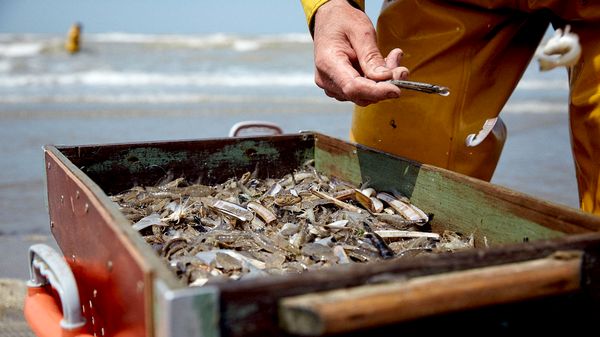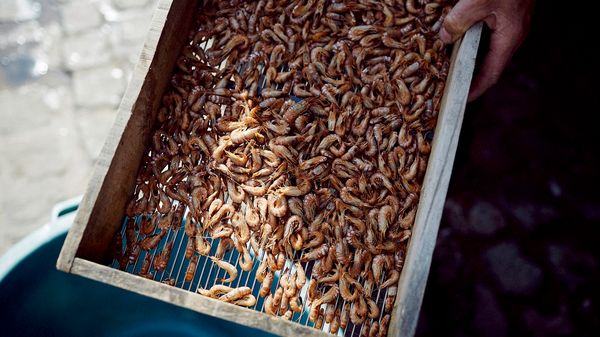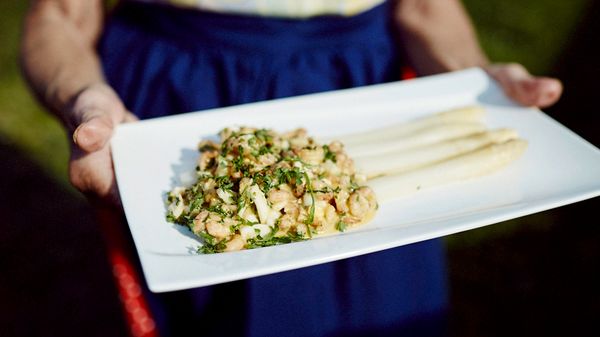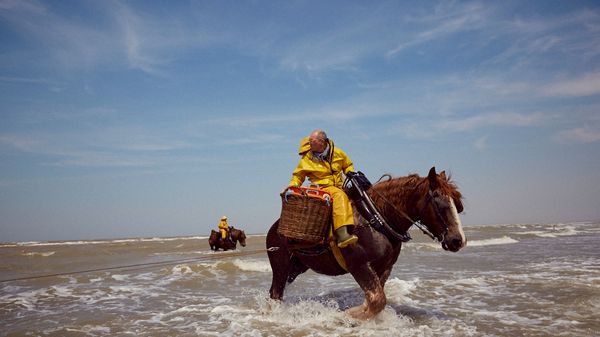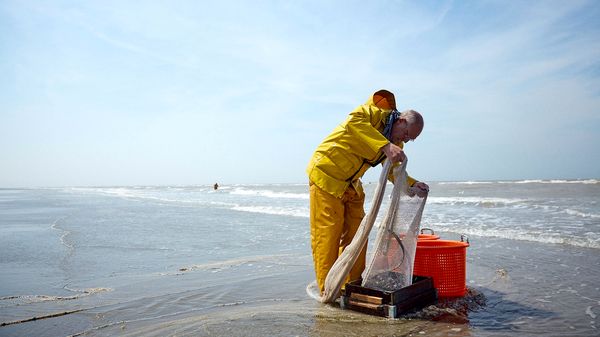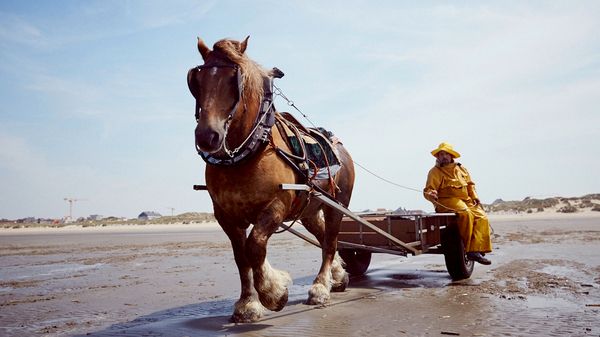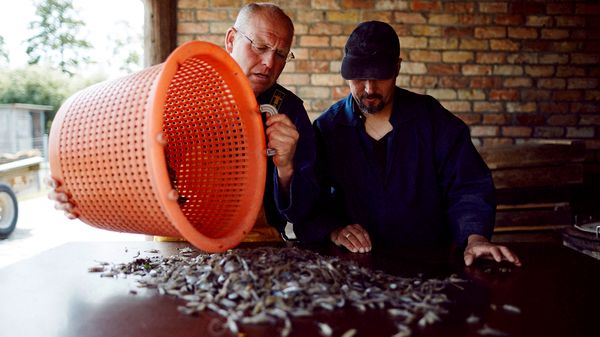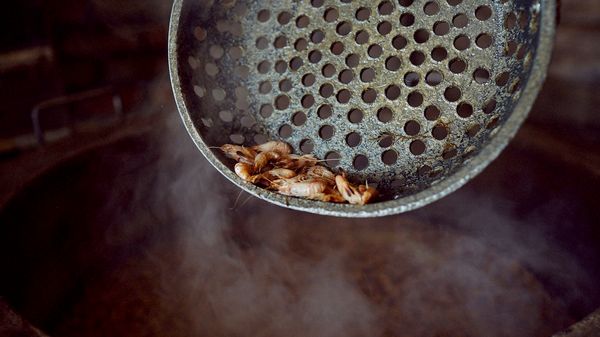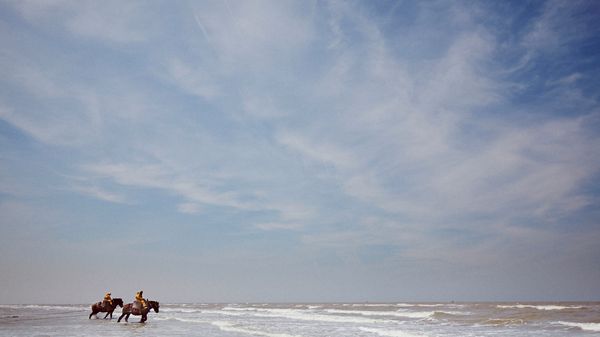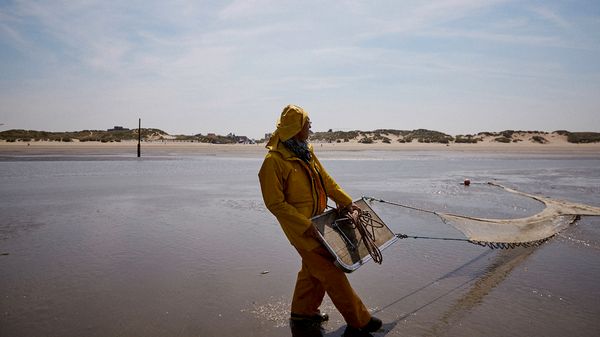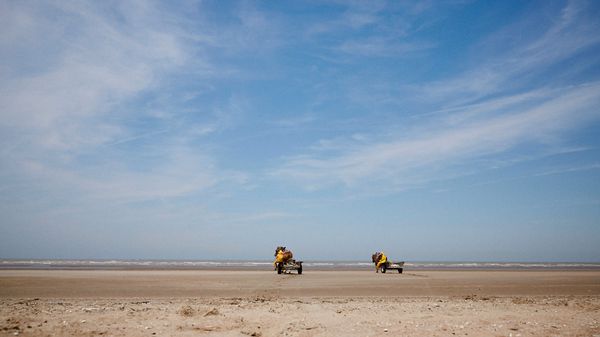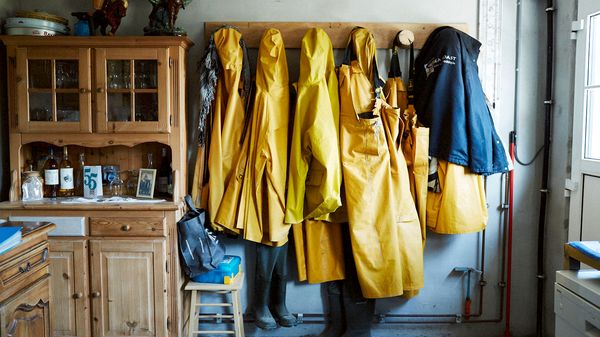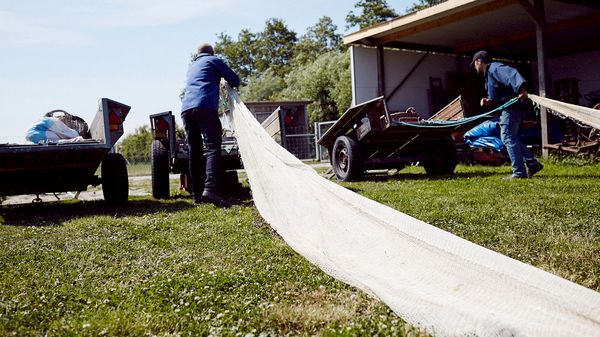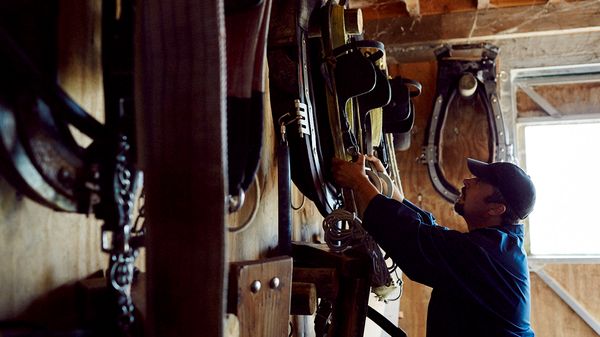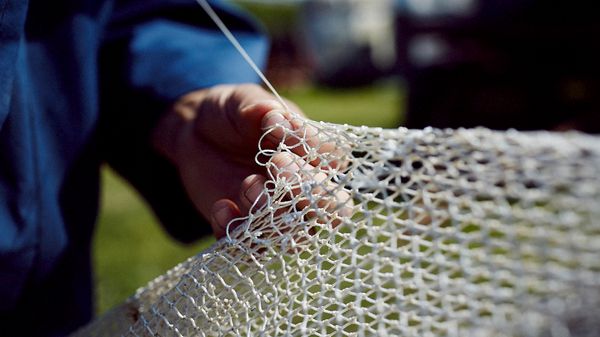They drag long fishing nets behind them in which the shrimp are caught. The contents of these nets is true slow food. Pure, simple, authentic enjoyment that starts on the journey to its destination. And the perfect antidote to the huge trawlers that plough the oceans, destroying the sensitive balance of the underwater world.
‘I could never work like that because I love the sea’, says Chris Vermote. ‘I first dragged a net behind me and caught shrimp and fish here when I was 13 years old.’ What fas-cinates him in particular? ‘You feel the primal force of the water, the pull and current and tides. Whatever you catch just tastes fresh and unadulterated.’
Belgian Kitchen Story
Definitely not mass-produced
A centuries-old tradition: in the Belgian region of Oostduinkerke, tough Brabant horses pull heavy nets into the shallows of the sea to catch shrimp. The catch may be small, but the taste is beyond compare. None of the twelve shrimp fishers can live from their work. Sometimes their catch is less than 10 kilos, too little to supply restaurants or markets reliably.
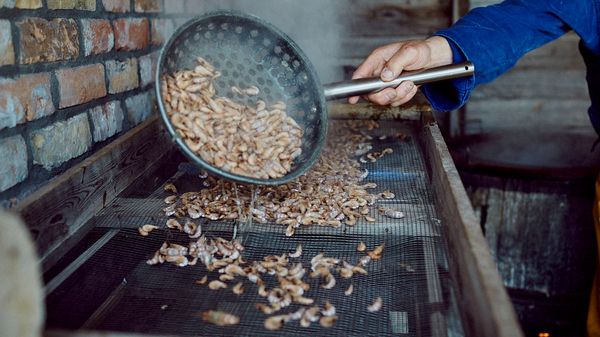
The shrimp fishers work in teams
It is low tide. The sea is far out. The hilly beach gently descends towards the water. The strong easterly wind leaves small waves on the sand – a natural relief of breathtaking beauty, giving an atmospheric contrast to the steep dunes. Stefaan Hancke and Chris Vermote slowly trot towards the surf on their Brabant horses. They are two of a dozen fishers who still bring in their catch on the backs of these robust horses.
The cold bloods are enormously strong
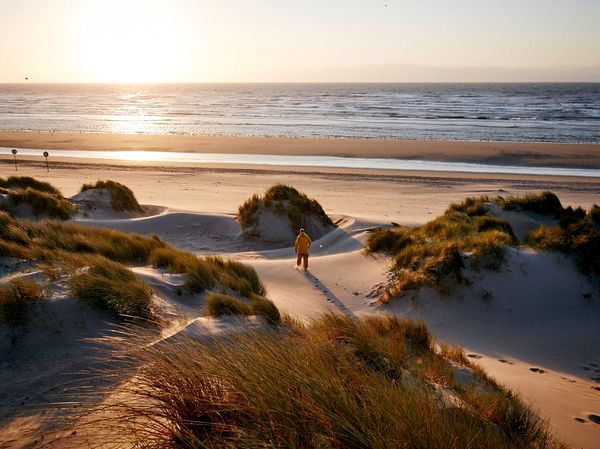
"A nice contrast to hectic daily life"
‘There is something infinitely meditative: the sea, the waves, the coming and going of the tides. A nice contrast to hectic daily life’, according to the 36 year old who runs a fast-food restaurant with his wife, Nele. It is thanks to Nele Vermote, the only female shrimp fisher, that the family bought Brabant horses to start shrimping.
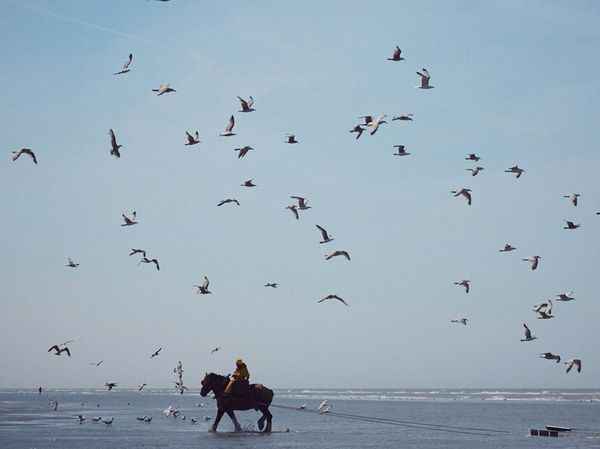
Nobody makes a living from shrimping any more
The tradition, originating in the 16th century, is of high value to the country and its people: Unesco recognised it as a World Heritage Site in 2013. But these days the shrimp catch is so small, and the prices so low, that it isn’t profita-ble. The price for a kilo is €8 – and sometimes the fishers don‘t even bring home 10 kilos. Not enough to supply a restaurant reliably.

Keeping family values alive
For Stefaan Hancke, who comes from an old farming family, shrimp fishing is but an important and enjoyable way of passing time. Whenever he has time away from his car repair shop, the ocean calls him and his horses. ‘We have always had Brabant horses’, he says. ‘Their immense power has fascinated me since I was a small boy.’
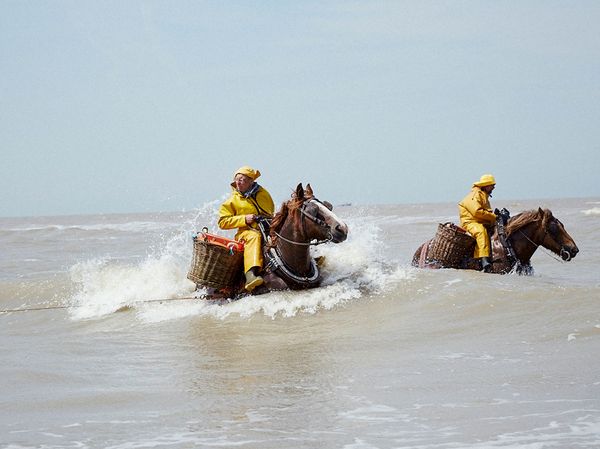
Horse Power
The cold bloods can live to 20 years of age and weigh around 1,000 kilos. Due to their powerful muscles and stocky build, they can easily pull several hundred kilos. That’s exactly what they have to do when they wade through chest-high water parallel to the coast whilst crab fishing.
But it’s not just the resistance of the water that they are up against. Funnel-shaped trawling nets are attached to their shoulder harnesses and two wooden boards mounted on their sides make them open up, forming a deadly tunnel for the shrimp.

How fishing shrimp with horses works
‘It’s not just the tide that thrusts the shrimp into the nets’, explains Stefaan. ‘A long chain hangs from the front of the net and drags along the seabed, causing small shock waves that flush out the shrimps.’ As they pop out of the sand and into the net, their fate is sealed.
The more shrimp they catch, the heavier the 7 × 70 m net becomes. Every 20 to 30 minutes, the fishers return to the beach to empty the nets and sieve the catch. The Brabant horses have time to rest while the fishers throw anything they can’t use back into the sea. ‘It’s about sustainability. Catching too small and young shrimp would destroy the biological equilibrium because they cannot breed’, says Chris and continues: ‘Fish and jellyfish are also removed. They would spoil the purity of shrimp flavour, so why kill unnecessarily?’ The yield is tipped into the baskets that hang on the horse’s wooden saddle. Leather saddles would be damaged by the saltwater, hence the wood. And there is a good reason why the horses’ tails are docked: a long tail could get caught in the nets and cause injuries.
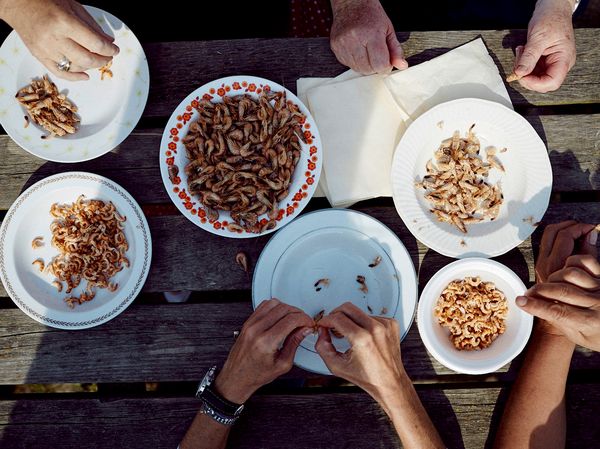
"Garnalenvissers te paard"
Low tide lasts about three hours, then the water begins to rise again and it is time for the fishers to make their way back. They must hurry so the live shrimp are as fresh as possible when they reach the pot. They are cooked in fresh saltwater until their light grey has become a gentle pink. Then, neighbours and friends are invited around to eat together and see out the day. Because that is an important part of the ritual that characterises a ‘Garnalenvissers te paard’, as the shrimp fishers are known in the region: the feeling of community is strengthened and ensures that the whole historical undertaking – and this piece of the Earth – does not get forgotten.
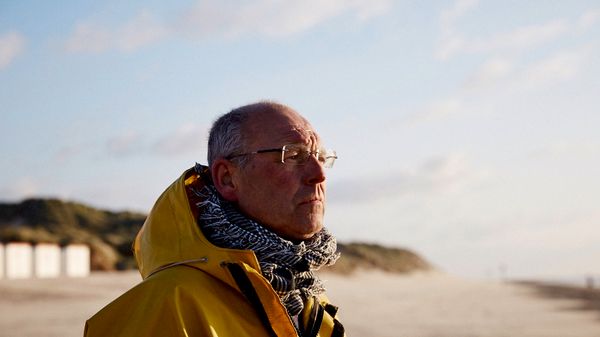
Who is Stefaan Hancke?
Shrimp fisher Stefaan Hancke comes from an old farming family. The Bra-bant horses’ enormous power has fascinated him since he was a small boy, when he dreamed of following in his grandfather’s footsteps. Today he breeds the animals and offers his land to other crab fishers, who keep their horses on his meadows and in his stables.
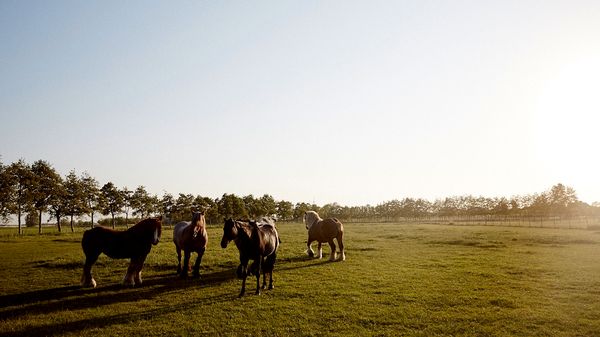
Brabant Horses
Brabant horses are a cold blood breed and are used as cart horses in for-ests and on rough terrain to this day. When they are young, their muscles are built up slowly. Only once the neck and back are strong enough are they allowed to pull heavy loads. They are introduced to the sea in high summer, when the cool water is a welcome break from high temperatures.
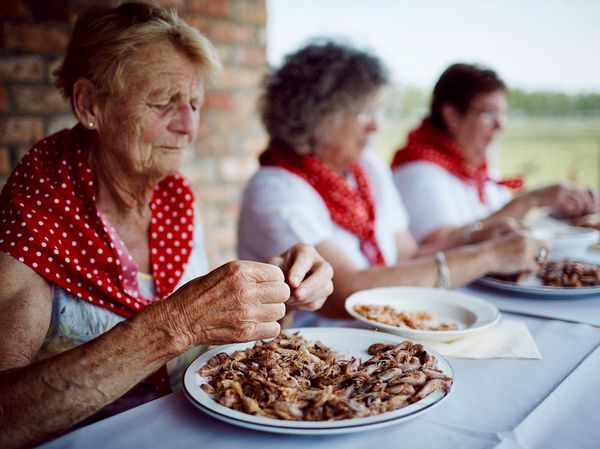
As many fresh shrimp as you can eat
Instead of tipping the entire catch into a saucepan, the fresh shrimp are spread out on a large stone plate and hand-sorted. Only the best shrimp are sprinkled into the boiling saltwater and simmered for a few minutes on a low heat. The shell is very fine and the flavour very fresh. This is why the locals like to devour the crustaceans in one piece – head, shell and all. Peeling is easy when you know how: first the head, then the shell is carefully removed, starting at the belly. Finally, the tail is easily dislodged by gen-tly moving it to and fro. The shells are also a nutritious ingredient: when cooked with onions, celery, carrots and tomatoes, they form the perfect base for a delectable shrimp soup. The shells are sieved out and replaced with fresh shrimp. Delicious!


